Darlingtonia in situ, Mountain Valley meadow, Curry Co, OR
Oct 15, 2014 0:34:41 GMT -5
kiwiearl, yosemite, and 5 more like this
Post by meizzwang on Oct 15, 2014 0:34:41 GMT -5
Way high up in the mountains, far away from civilization, Rob Co of the Pitcher Plant Project and I decided to go on a crazy hike in what seemed like an endless mountain range. Reaching the site requires an hour and a half drive from the closest form of civilization and a 2 mile hike in some challenging steep terrain. On the way to the site, if you drive too fast or lose control, you'll fall off a sheer cliff, so there's no room for error out there. The roads aren't labeled out here, and getting there requires a little bit of trial and error plus some luck.
Before I continue this story, let me add that hiking out in these mountain ranges require being in decent physical shape...this is no roadside botanizing! For the record, I look slightly fat but am buff underneath that, LOL Rob is quite physically fit (I'd hire him as a security guard any day), and he had a hard time going up and down these mountains (although to give him credit, he was slightly sick, so that's probably what slowed him down). Because of the high elevation (this was probably around 6,000 feet (1,830 meters) above sea level, the air is slightly thinner, which makes breathing more challenging.
The dangers are also a lot higher than your average roadside site. For one, if you have an emergency, it's an hour and a half drive to the nearest form of civilization. Another challenge is the seep is about 2 miles away from where you can park the car. When we packed our backpacks, we had enough food and water to last around 4-5 days just in case. We also brought basic materials for survival (waterproof clothes, warm jackets, lighters, knives, bear spray, etc). Lastly, everything out there looks the same. When you try to find your way back to the car, it's extremely confusing and disorienting. Be sure to bring someone with a very good sense of direction if you decide to hike out in the wilderness like this.
While there are trails out in this breath-taking scenery, the actual seep doesn't have any official trail to it. You essentially have to climb up a mountain top, look in the distance, and try to figure out how to get there without falling off the cliff.
Here's Rob Co on the way to the site:
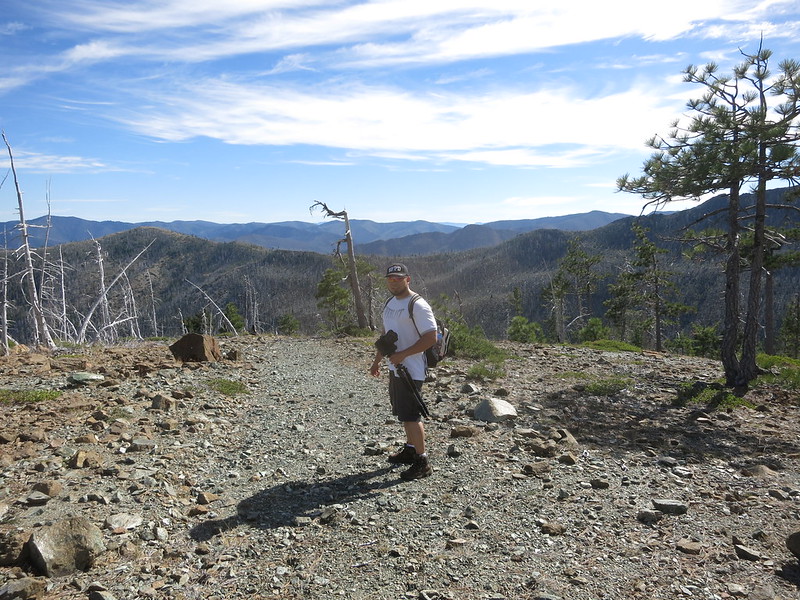
The trails out here are extremely confusing because they aren't maintained whatsoever:
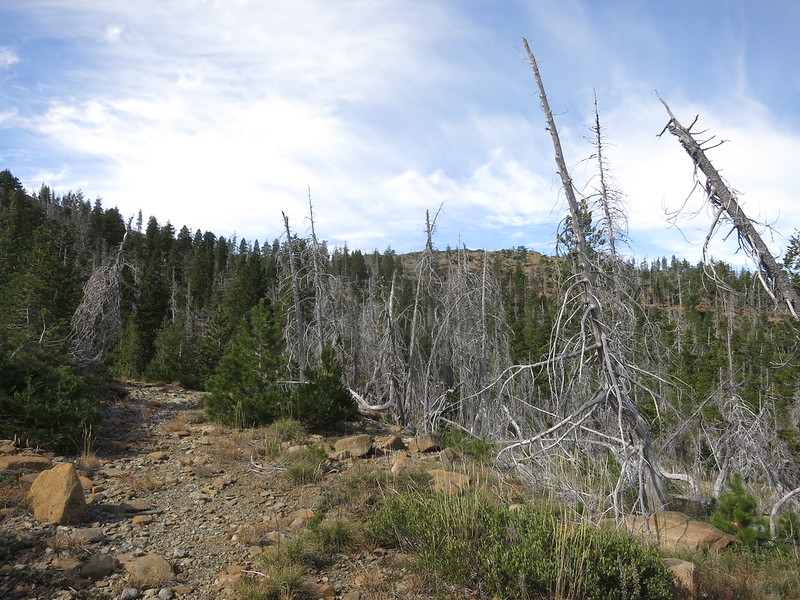
Some of the trails are overgrown to the point that it's hard to tell it's still there:
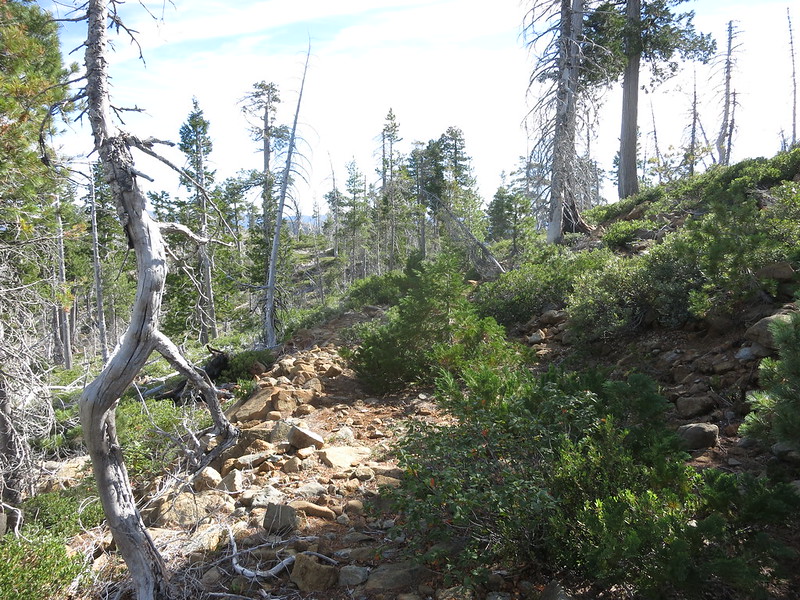
The scenery out there is absolutely breath-taking! Notice how many of the trees are pretty much dead-this was caused by a massive fire many years ago:
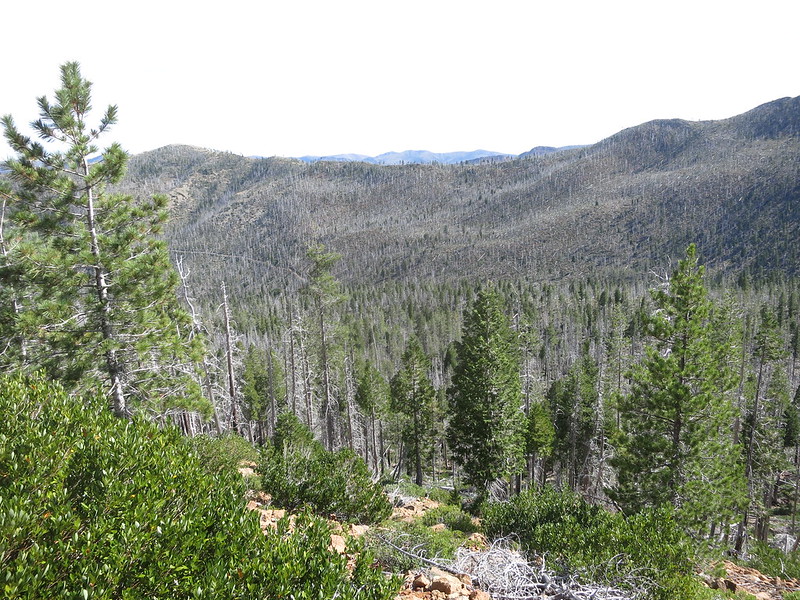
Everywhere you look, there's jaw-dropping views like this. Interesting how some of the most beautiful places on this planet are quite hostile:
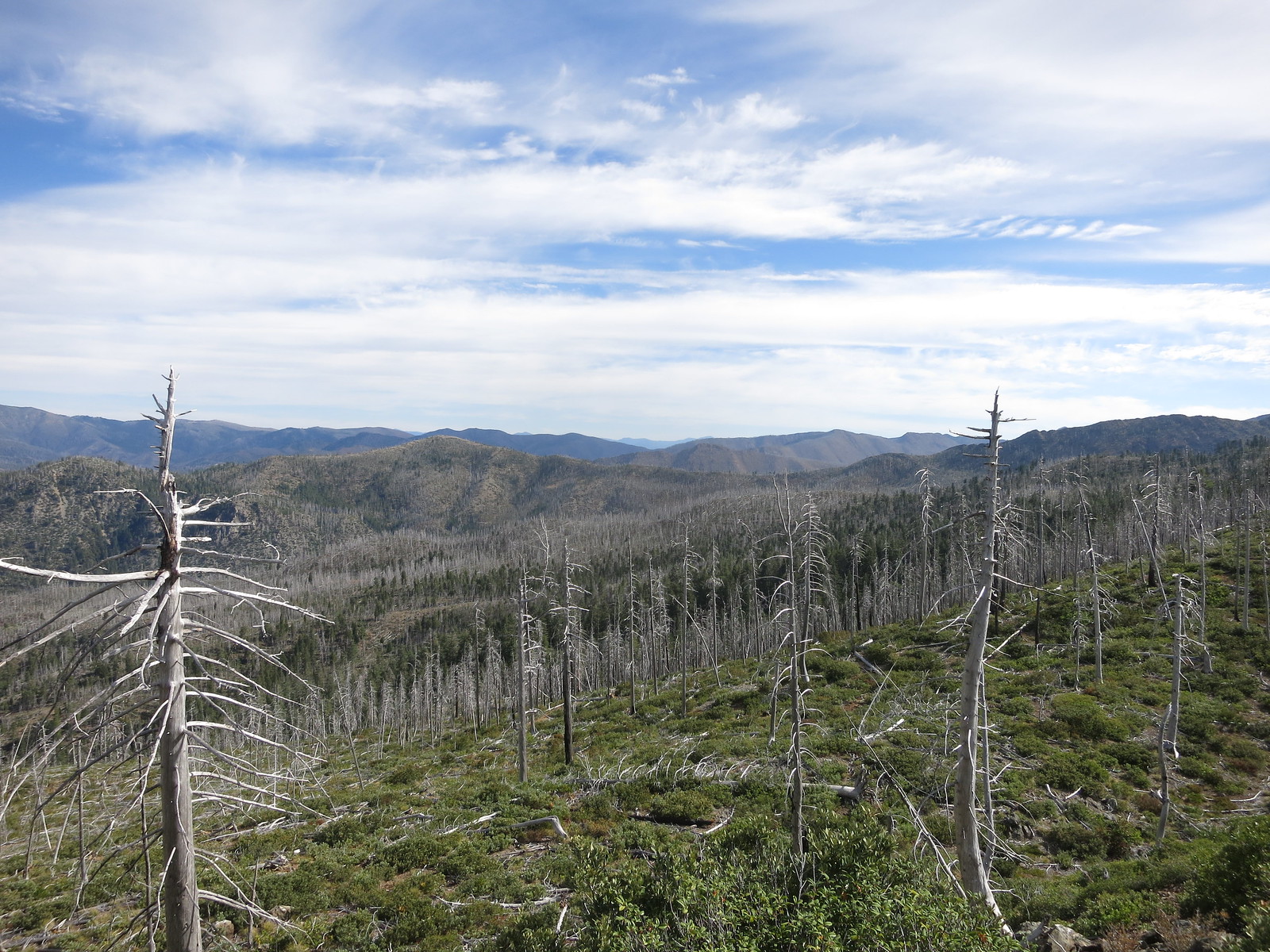
What you can't tell is how steep this mountain is. It was very difficult figuring out how to get down to the fen, which is in the distance:
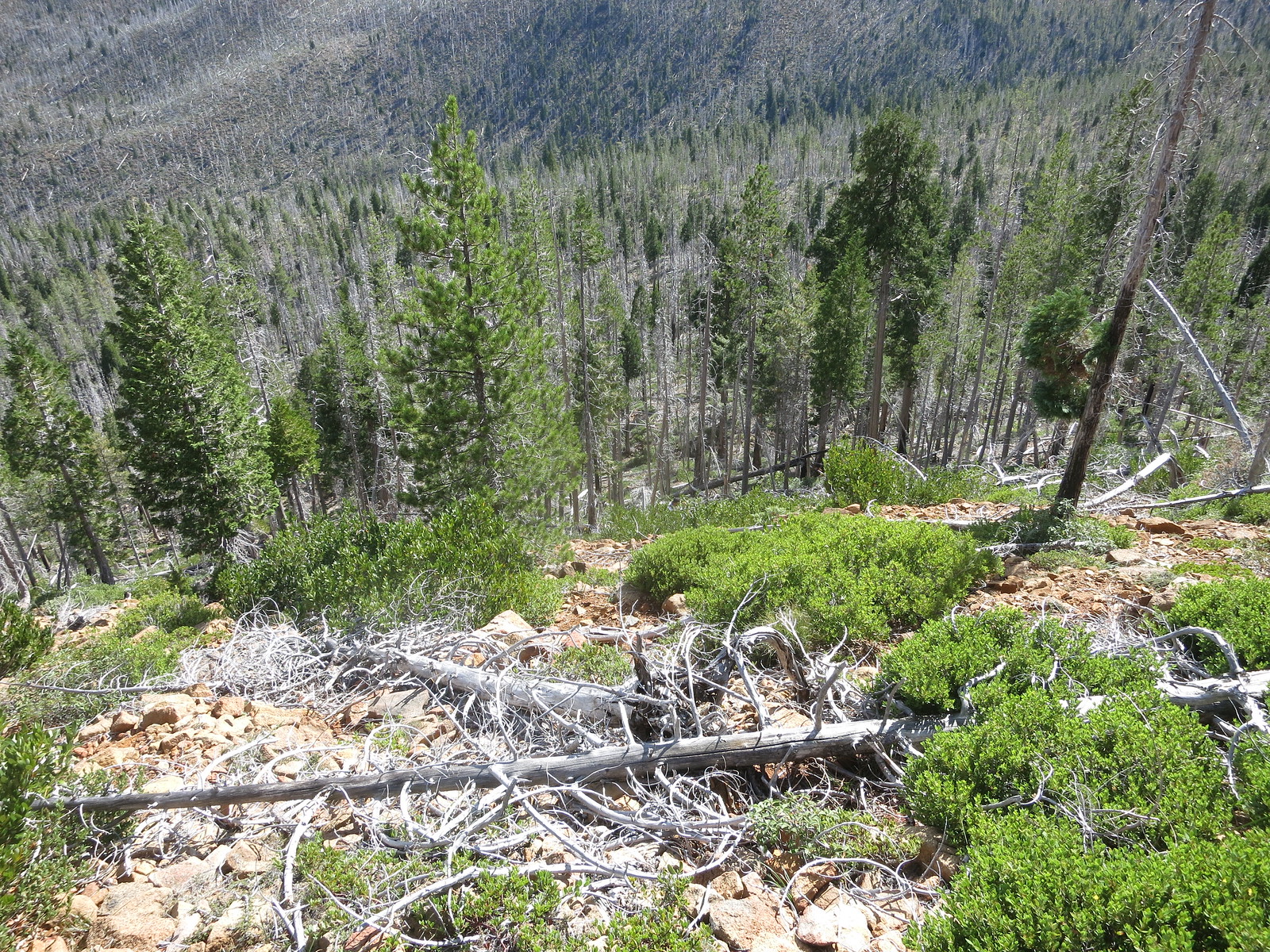
Can you see the cobra pitchers in the distance? Probably not possible from this photo, but you could see it in person:
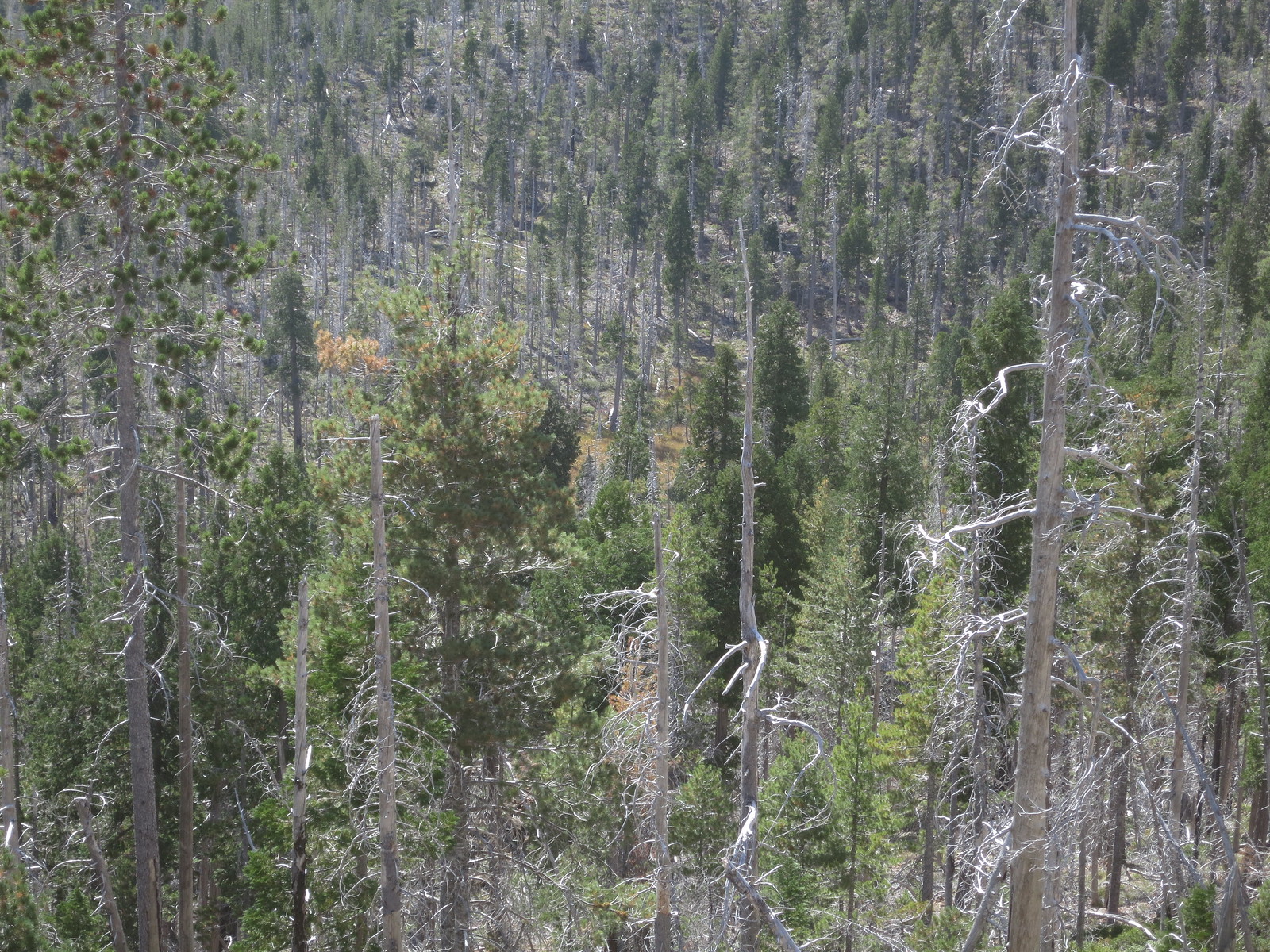
We caught the last flush of some azaleas in bloom. The fragrance was sweet like candy-it smelled better than it looks!
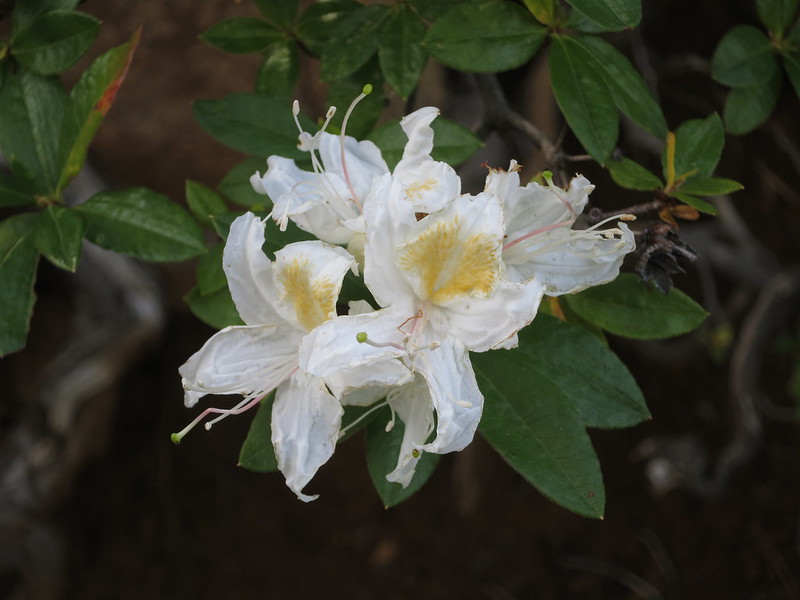
But who cares about all that, here's what we came to see, Darlingtonia by the thousands! This field was quite massive and absolutely impressive:
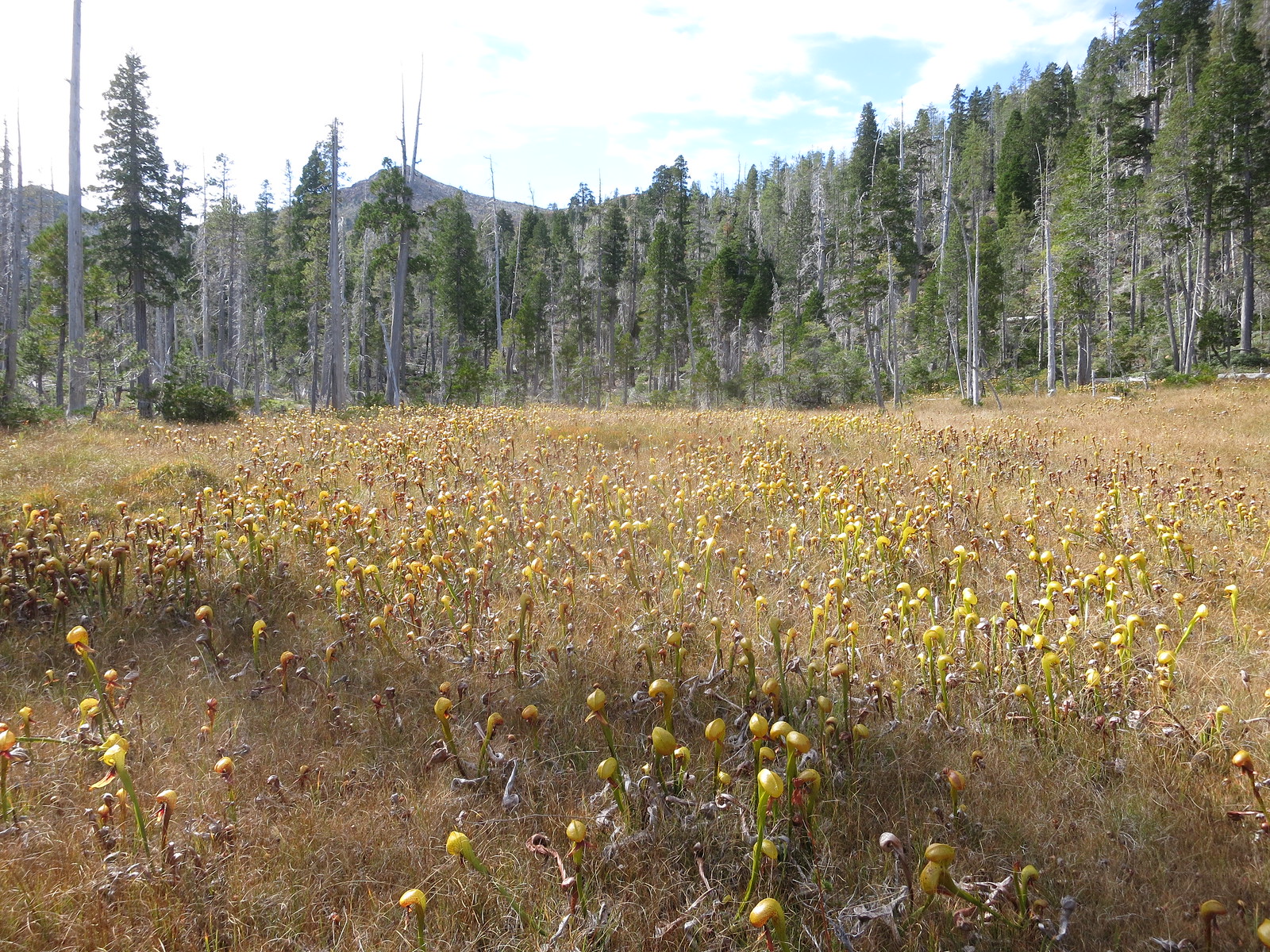
In this photo, I'm standing uphill, and water is percolating downhill. The bogs were mainly composed of decomposing tree trunks, grasses, sticks, and a peat-like substance. It sort of bounced a bit when you walked on it:
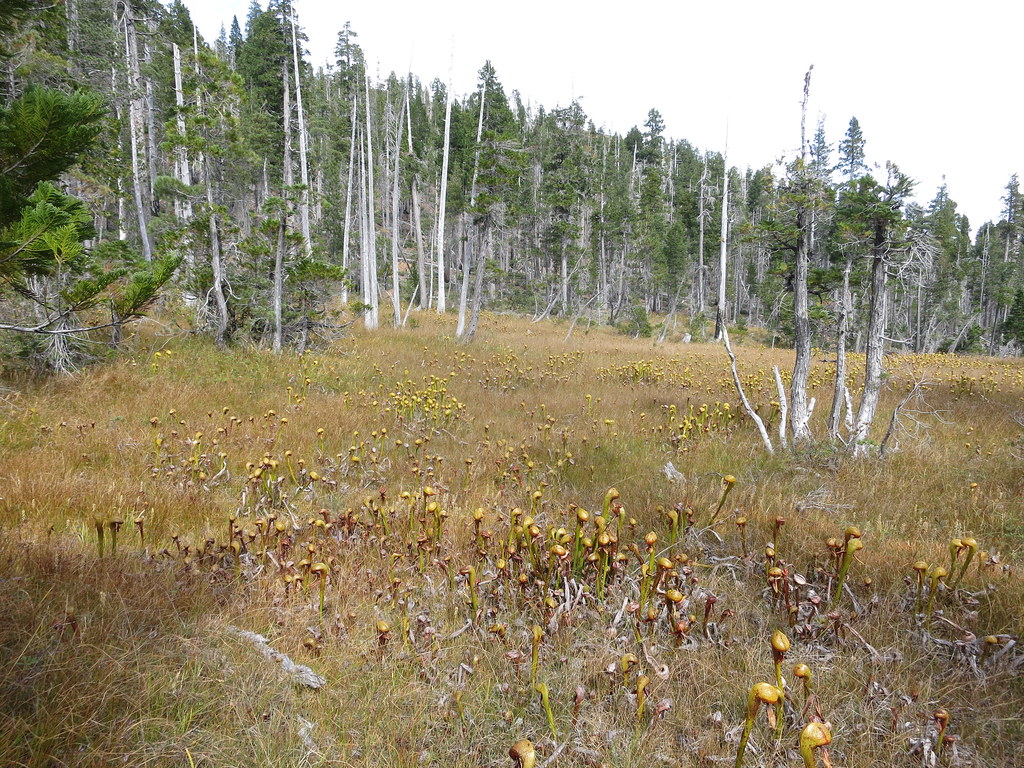

There were a few ponds at this site:
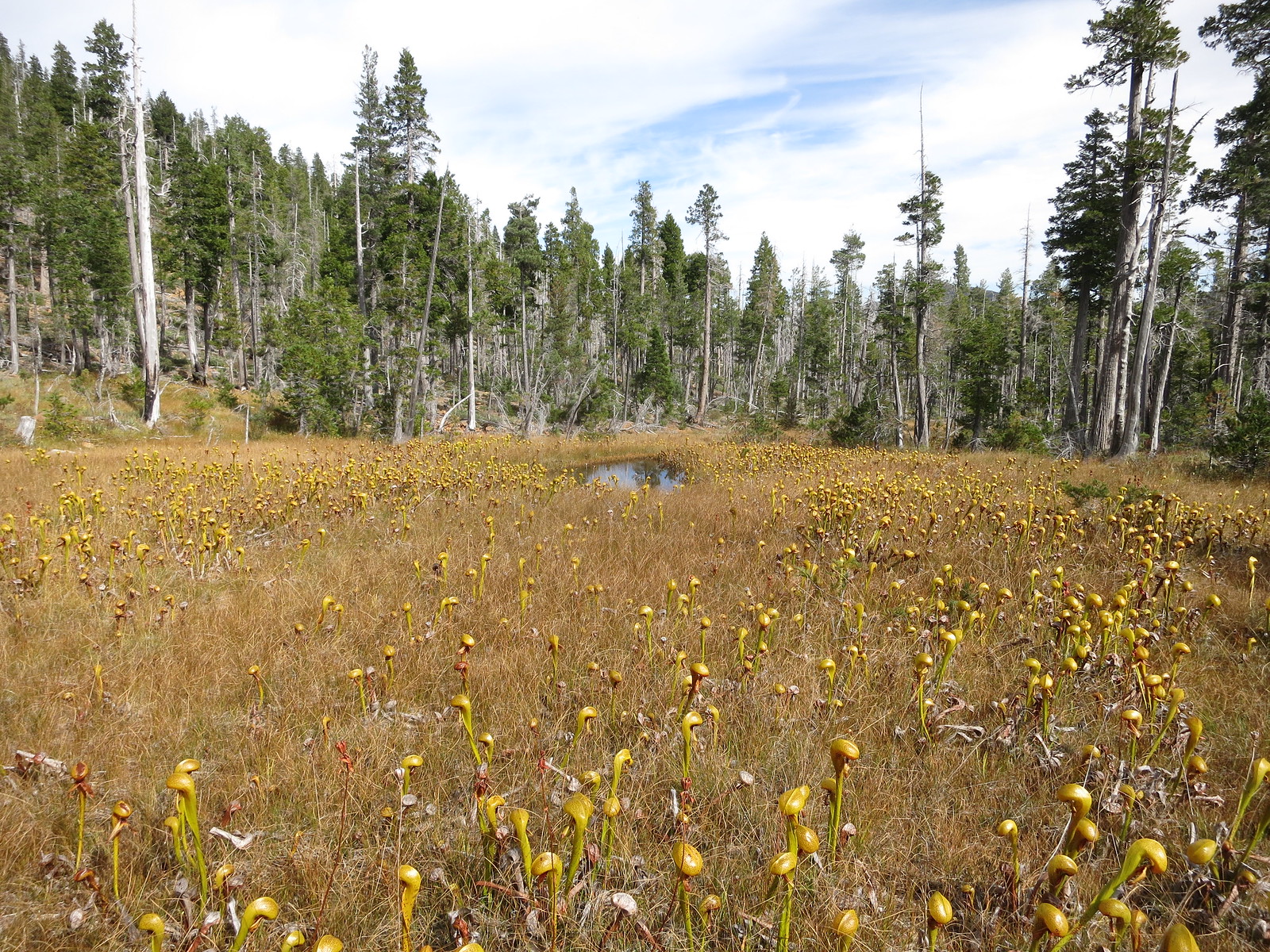
And the Darlingtonia grew on the edges of these ponds. Keep in mind, water was constantly moving here:

Just loved this unique habitat. Notice how there appears to be oil in the water: these are natural organic oils produced from decaying plant matter(probably from tree sap if I had to guess):
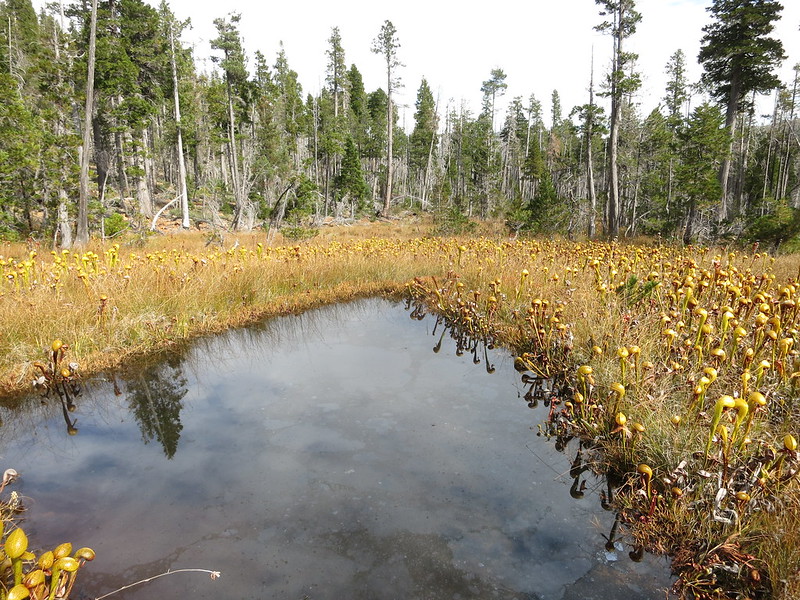
Some of the plants are literally growing submerged. Slightly off topic, there were deep potholes at this site, and I fell into one because it was covered by the grass. I was up to my waist in water. At the bottom was thick mud that was hard to get out of, but I clearly survived:

There were mainly "regular" color variants here, but check out the shape and dark red tongues on these traps:
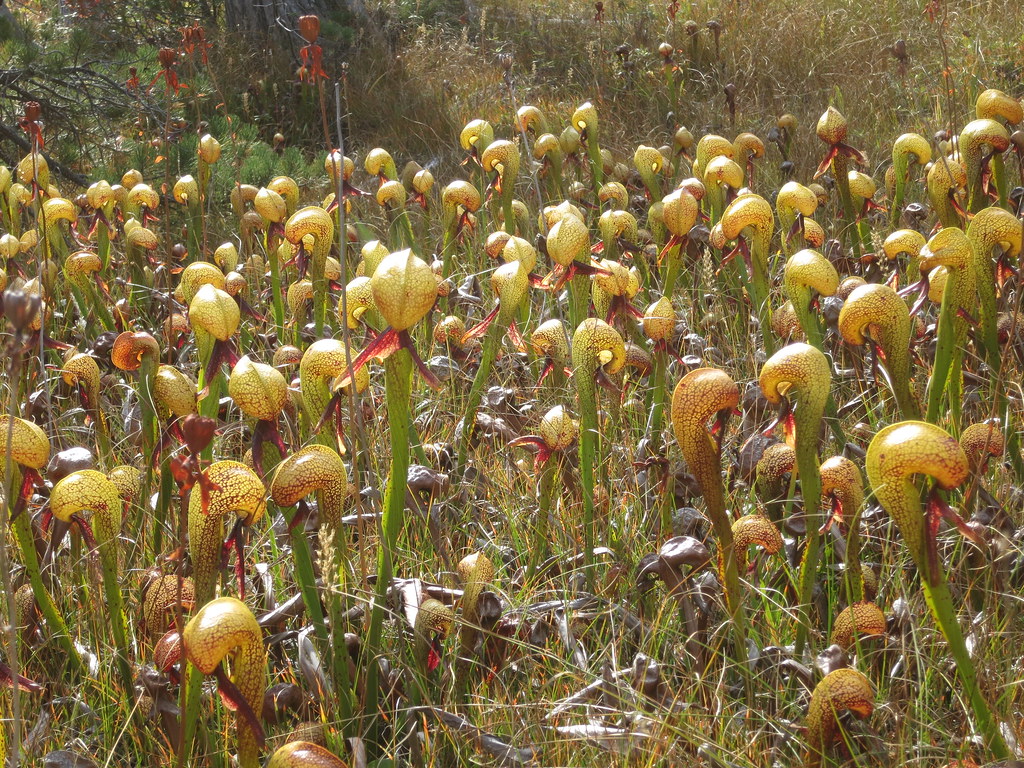
Hard to tell from this photo, but some were gigantic:
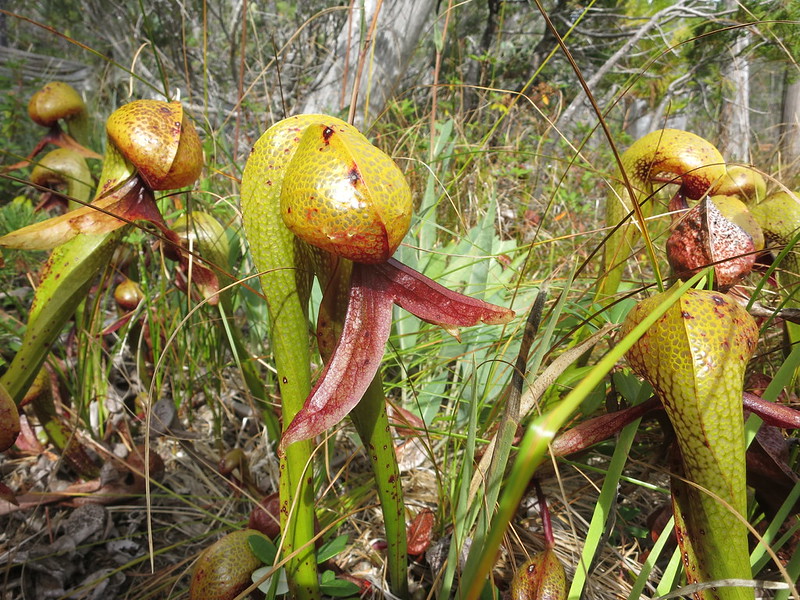
My hand for scale:

But there were also some amazing color variants here as well, like this copper topped one:
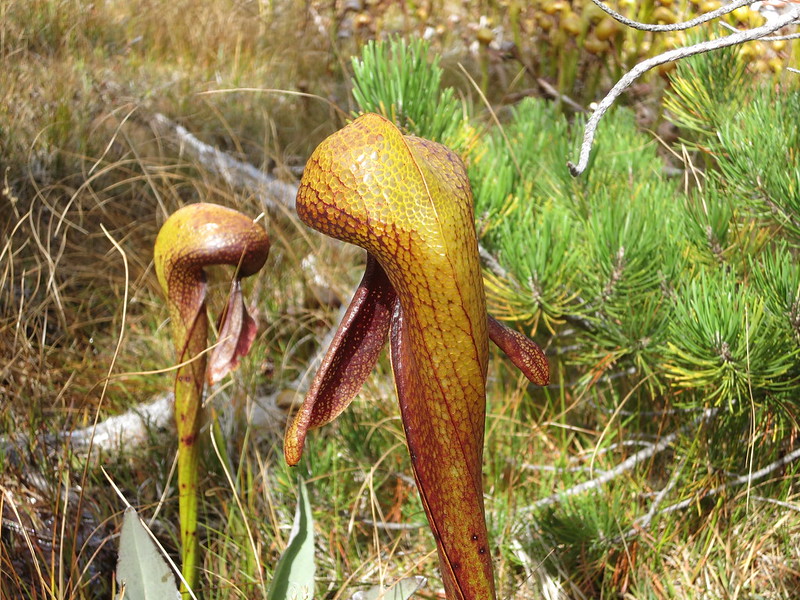
Extensive windows and nice colors:
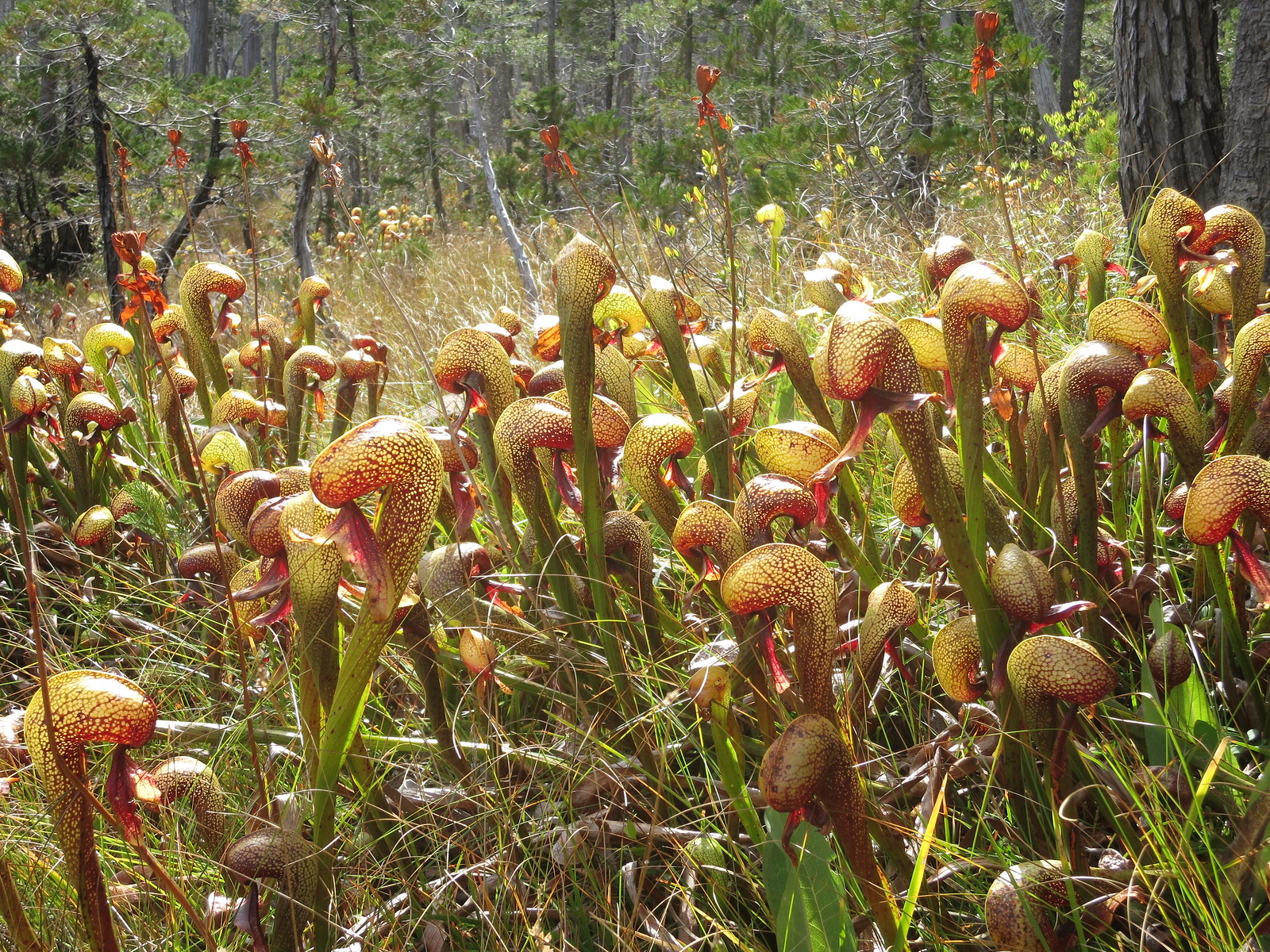
Outstanding color variants. Notice the top of the head on the trap in the background is brown-this is from sun burn (heat stress):
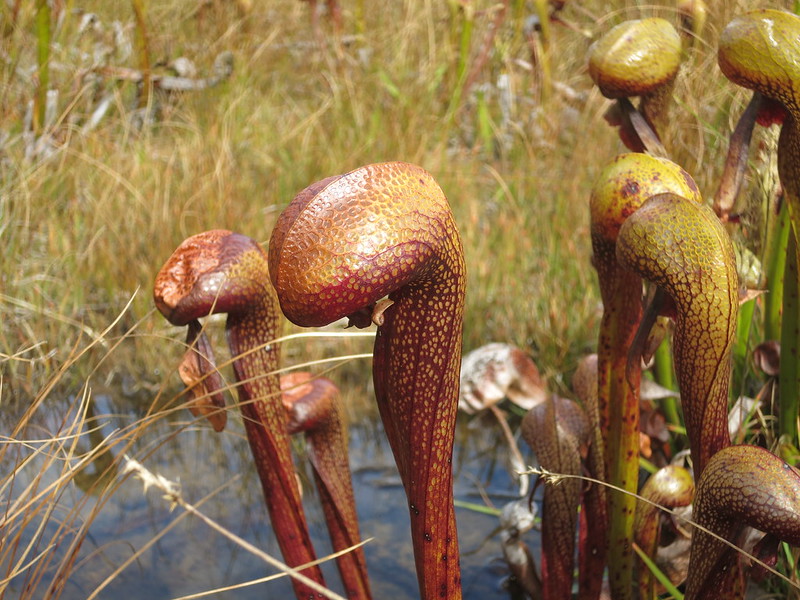
Hard to believe this is real:
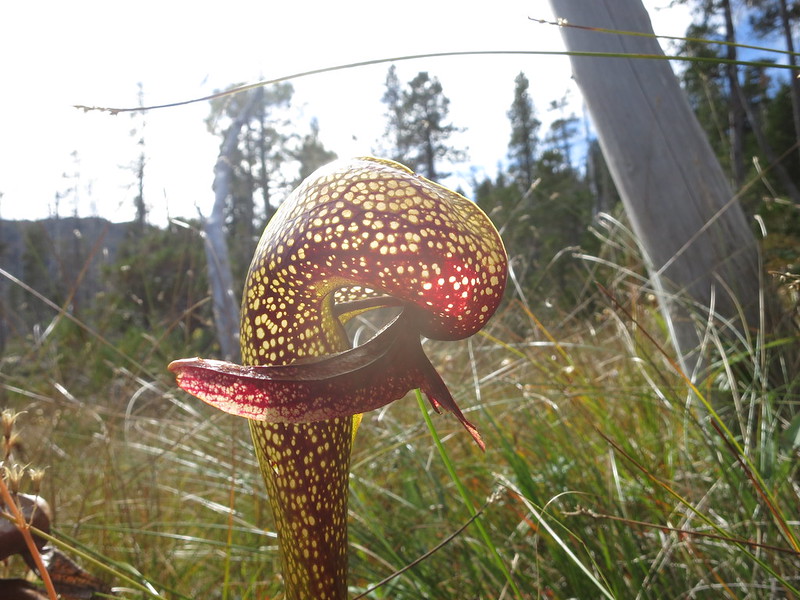
Bright red:
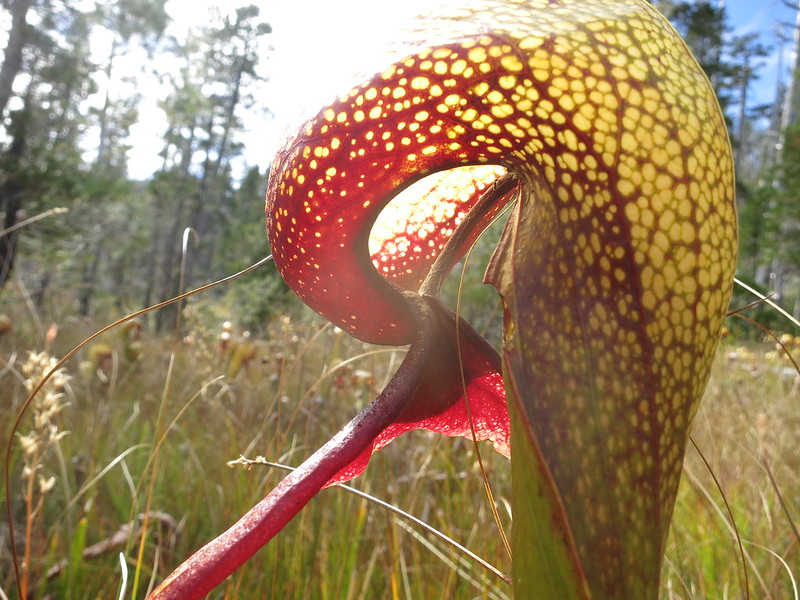
and some were solid red:
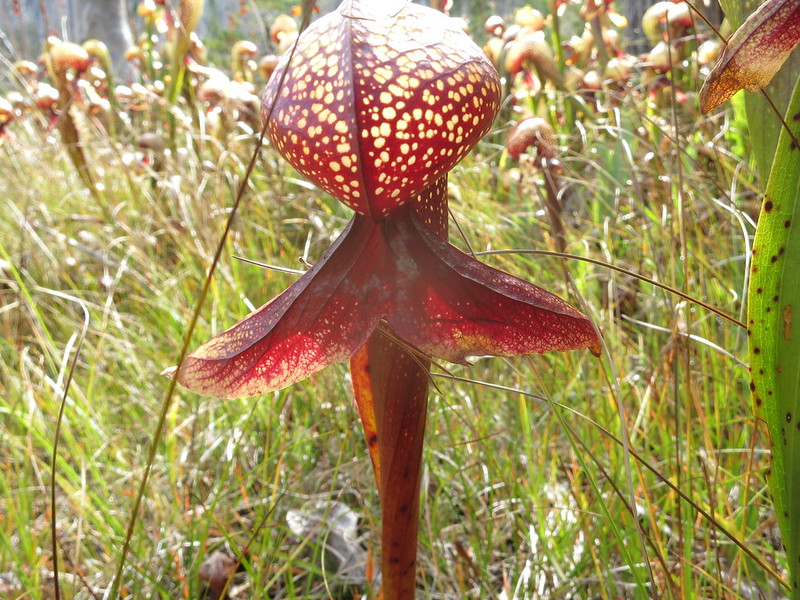
This one was in part shade, but check out how bright red that tongue is:
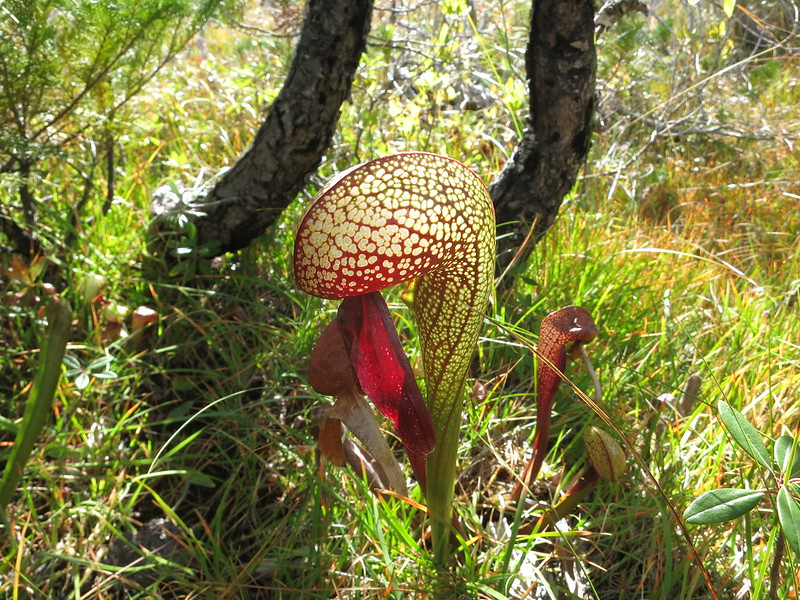
close up of the same pitcher:
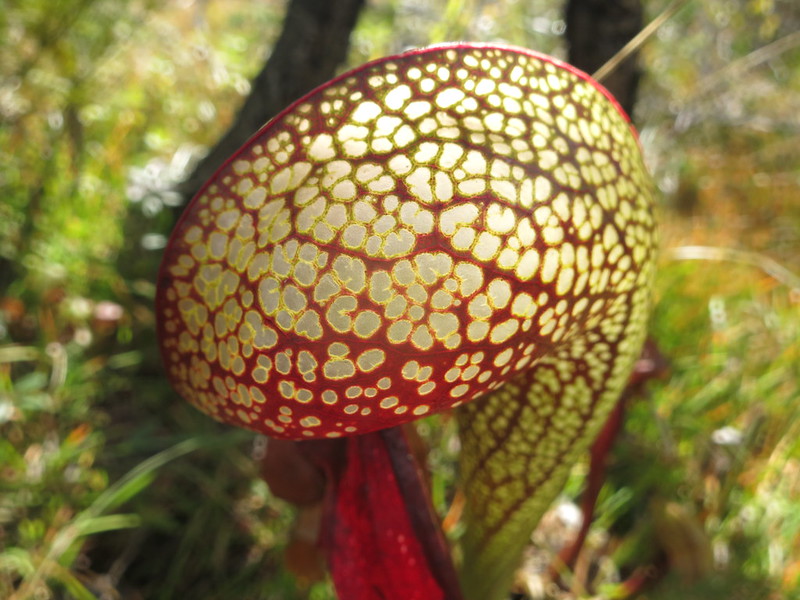
What we didn't realize is this whole time, we were in a bear's den! Notice the bones, and how the grass has been bent over. Interestingly, the bears walked around the darlingtonia, as though they knew these plants are treasures that shouldn't be destroyed. I didn't get a photo of that because I was in a hurry to leave the moment I saw this...you'll just have to take my word that it's true:

Anyhow, that's it for the Mountain Valley Meadow site, hope you enjoyed the adventure!
Before I continue this story, let me add that hiking out in these mountain ranges require being in decent physical shape...this is no roadside botanizing! For the record, I look slightly fat but am buff underneath that, LOL Rob is quite physically fit (I'd hire him as a security guard any day), and he had a hard time going up and down these mountains (although to give him credit, he was slightly sick, so that's probably what slowed him down). Because of the high elevation (this was probably around 6,000 feet (1,830 meters) above sea level, the air is slightly thinner, which makes breathing more challenging.
The dangers are also a lot higher than your average roadside site. For one, if you have an emergency, it's an hour and a half drive to the nearest form of civilization. Another challenge is the seep is about 2 miles away from where you can park the car. When we packed our backpacks, we had enough food and water to last around 4-5 days just in case. We also brought basic materials for survival (waterproof clothes, warm jackets, lighters, knives, bear spray, etc). Lastly, everything out there looks the same. When you try to find your way back to the car, it's extremely confusing and disorienting. Be sure to bring someone with a very good sense of direction if you decide to hike out in the wilderness like this.
While there are trails out in this breath-taking scenery, the actual seep doesn't have any official trail to it. You essentially have to climb up a mountain top, look in the distance, and try to figure out how to get there without falling off the cliff.
Here's Rob Co on the way to the site:

The trails out here are extremely confusing because they aren't maintained whatsoever:

Some of the trails are overgrown to the point that it's hard to tell it's still there:

The scenery out there is absolutely breath-taking! Notice how many of the trees are pretty much dead-this was caused by a massive fire many years ago:

Everywhere you look, there's jaw-dropping views like this. Interesting how some of the most beautiful places on this planet are quite hostile:

What you can't tell is how steep this mountain is. It was very difficult figuring out how to get down to the fen, which is in the distance:

Can you see the cobra pitchers in the distance? Probably not possible from this photo, but you could see it in person:

We caught the last flush of some azaleas in bloom. The fragrance was sweet like candy-it smelled better than it looks!

But who cares about all that, here's what we came to see, Darlingtonia by the thousands! This field was quite massive and absolutely impressive:

In this photo, I'm standing uphill, and water is percolating downhill. The bogs were mainly composed of decomposing tree trunks, grasses, sticks, and a peat-like substance. It sort of bounced a bit when you walked on it:


There were a few ponds at this site:

And the Darlingtonia grew on the edges of these ponds. Keep in mind, water was constantly moving here:

Just loved this unique habitat. Notice how there appears to be oil in the water: these are natural organic oils produced from decaying plant matter(probably from tree sap if I had to guess):

Some of the plants are literally growing submerged. Slightly off topic, there were deep potholes at this site, and I fell into one because it was covered by the grass. I was up to my waist in water. At the bottom was thick mud that was hard to get out of, but I clearly survived:

There were mainly "regular" color variants here, but check out the shape and dark red tongues on these traps:

Hard to tell from this photo, but some were gigantic:

My hand for scale:

But there were also some amazing color variants here as well, like this copper topped one:

Extensive windows and nice colors:

Outstanding color variants. Notice the top of the head on the trap in the background is brown-this is from sun burn (heat stress):

Hard to believe this is real:

Bright red:

and some were solid red:

This one was in part shade, but check out how bright red that tongue is:

close up of the same pitcher:

What we didn't realize is this whole time, we were in a bear's den! Notice the bones, and how the grass has been bent over. Interestingly, the bears walked around the darlingtonia, as though they knew these plants are treasures that shouldn't be destroyed. I didn't get a photo of that because I was in a hurry to leave the moment I saw this...you'll just have to take my word that it's true:

Anyhow, that's it for the Mountain Valley Meadow site, hope you enjoyed the adventure!






 Here are images of plant progress on 03/16/2023
Here are images of plant progress on 03/16/2023